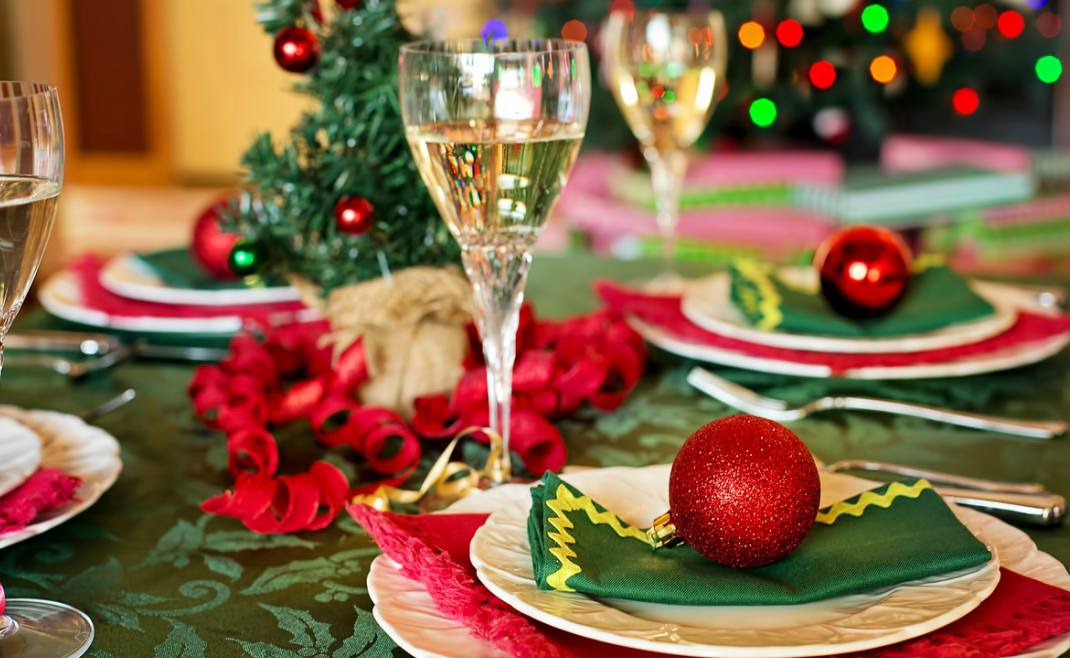
10 surprising facts about French Christmas dinners
Just what do the French eat for Xmas dinner? Is it similar to the British meal or is it a giant snail, stuffed with macarons and croissants? Let’s find out together!
1. The French have their main Christmas dinner on the 24th.
Timing is the most obvious difference between French and British festive dinners. In Britain we do our turkey eating on the 25th, often mid afternoon after the Queen’s speech*. But in France le repas de Noël takes place on the evening before. That’s right, on Christmas fudgin‘ Eve!
“Silly old French”, I first thought on hearing this mind-boggling information. “They’ve been having their Christmas dinner on the wrong day for years and no one’s told them.”
But let’s consider the matter more closely; is it the really the French who’ve got it wrong? Think about a typical family Christmas in the UK. If there are children around there’s a huge possibility that you’ve all got out of bed at stupid o’clock to see what Santa has left. Then after Presentmaggedon has been cleaned up, it’s straight onto preparing a huge and complicated dinner for a lot of people. And who’s doing all this work? There’s a strong chance that it’s poor old put-upon mum who’s burdened with the lion’s share of the work.
Compare that with the French system of dividing these events over two days. You get the dinner out of the way the night before, leaving the Christmas day to present opening, eating leftovers and scratching yourself while watching TV in yoga pants. And isn’t that what Christmas is all about?
2. There will be foie gras.
Foie gras is pretty much synonymous with Christmas in France so you can bet your dernier centime that it will make an appearance somewhere during the meal. The classic way of serving foie gras is with pain d’épices (similar to gingerbread but less sweet) and a side of chutney or confit d’oignons – this works well as an entrée or as a mini version for the apéritif. It could make an appearance in the plat principal in the form of a stuffing, pan-fried as an accompaniment or made into a sauce. It’s even possible to be served foie gras as a dessert, as this recipe for macarons au foie gras proves.
But foie gras is not simply an ingredient like any other. Its use outside France is controversial, indeed there is a ban on the production and sale of foie gras in many countries because of the force-feeding used on ducks and geese to produce the fatty liver. It’s an emotive point for some outsiders (I say outsiders because I’ve never seen, read or heard as much as a mutter on the subject in France) so prepare yourself in advance (your excuses or your arguments) if this is a meat product you’d rather avoid.
3. There are only four possible entrées.
We’ve established that foie gras is a likely starter – what else might be served? Well, like in the UK, smoked salmon is a favourite, served simply with bread, butter and a wedge of fresh lemon, or in some sort of terrine with crème fraïche and herbs. Chefier types might go for scallops; one popular (modern) method is a carpaccio de St Jacques, or keep it traditional by searing them quickly in a hot pan and serving with a beurre blanc. A luxury alternative would be oysters, swallowed down whole and raw, or cooked under the grill for the more squeamish.
Try serving anything other than foie gras, salmon, scallops or oysters and you’ll find yourself shot from a canon from the top of Mont St. Michel into the English Channel where you belong, you nasty prawn-cocktail eater.
4. Turduckens aren’t a thing in France.
Remember a couple of years back in Britain when it seemed like the whole country went mental over the idea of having a chicken inside a duck inside a turkey? It became a sort of arms race to see who could have the most possible birds die for their Xmas dinner, ending only when Prince Philip ate the contents of London Zoo’s aviary stuffed inside a pterodactyl.
Like many food fads, this has skipped France, so don’t expect multiple birds on your plate. Instead you’re likely to be served turkey, chapon or poularde. These last two are male and female hens that have been prevented from reaching sexual maturity and fed to be as fat as possible to be as yummylicious as possible, like little Hansel and Gretels. Bon appetit!
5. The French main course is a streamlined affair.
Imagine a typical British Christmas dinner. You’re perhaps picturing turkey, at least one stuffing, roast potatoes, various vegetables (like carrots, parsnips, peas, brussel sprouts, red cabbage), bacon-wrapped sausages, gravy, cranberry sauce, bread sauce. I’m tired after just typing that; how many of us have actually eaten a full plateful at one sitting?
Look at this picture: why do we need four types of vegetables – not including potatoes – on one plate? And three sauces? IT’S TOO MUCH. Preparing umpteen different elements makes the cook’s job so much more difficult, and much of the food ends up wasted.
Now I’m aware I’m about to compliment the French twice in one post (which is unnatural and upsetting, I know) but when it comes to the Christmas dinner they are far more reasonable. The main meal might include meat, perhaps a bit of stuffing, one or two vegetable and a sauce. Ahhhhhhh. Do you hear that sound? It’s your stomach sighing with relief.
6. Britain’s most divisive vegetable, the brussel sprout, isn’t a feature of the French Chrimbo repas.
Devastating news for fans of the farty wee snot-coloured legume, it’s true; brussel sprouts just aren’t fetishised or despised in France. Incomprehensible to Britons, perhaps. Instead, you are likely to be served chestnuts, probably the classic Christmas vegetable in France. They could appear in stuffing or as part of a sauce. Other winter vegetables that may make an appearance include squash, parsnips or pumpkins, as well as potatoes and mushrooms. Gratins and purées are popular because they don’t require last-minute preparation and are forgiving of delays. Your chances of a roast spud are sadly very limited.
7. All hail the mighty bûche.
There is only one choice of dessert at Noël and that’s la bûche de Noël. Now this is something we’re already familiar with in Blighty as the Yule log. In its simplest form it’s a chocolate-covered Swiss roll, with lines scraped onto its topping to give the distinctive ‘bark’ exterior. Below left we can see the kind of home-baked version you might find on tables across France.
But if we know one thing about the French it’s that they can complicate food better than anyone and that’s where next-level bûches de Noël come in – desserts so sophisticated, intricate and expensive that have as much in common with the homebaked version as a Model T Ford does with a NASA spaceship. Frankly I’d be happier with the version on the left as the Lenôtre bûche (pictured) looks like a dessert that would want me to apologise to it before, during and after eating it. At €115 it’s not a pud that’s going to be appearing on many people’s tables but there are many ‘in between’ versions within the budger of most families. My beloved Picard has a particularly impressive range, or you can visit your local bakery and put an order in for something for around €20-40.
8. A dinner that goes without a bang.
Christmas dinner isn’t all about food. In Britain it’s traditional to have crackers decorating the table, ready to be pulled, their jokes groaned over, gifts swapped and hats worn until they fall apart and float, crumpled and greasy onto the carpet. I enjoy the low-level competition of trying to win the tug (have a lower hold than your opponent and you’re virtually guaranteed success) so the absence of Christmas crackers in France does bother me. But it’s not all bad. You may well find yourself with a small gift on your place setting, as it’s not uncommon for your host to offer you a little something, like chocolates or a small toy for kids. Don’t epect minor explosions though, except from Champagne bottles.
9. The finest wines known to humanity.
It wouldn’t be Christmas in France without lashings of fine wine, and at Christmas time expect a good quality drop. Or drops. Because – aside from quality of wine – there is an impressive variety of wine served during the meal.
There’s a good chance you’ve had Champagne for the apéritif, if you’re having foie gras as a starter you’ll have a sweet white wine like a Sauternes** or a drier white like Sancerre to accompany fish. The main meal is more complicated because the choice of wine depends on the bird and what it’s served with; turkey with a rich stuffing would be accompanied by a Bordeaux, whereas a younger bird with chestnuts might be better with a white Châteauneuf-du-Pape or a lighter red.
If your hosts are particularly hardcore wine enthusiasts, they may change reds for the cheese. Anything is possible, and at this point in the meal you may have lost all sense of which glass is yours and – indeed – who you are. (We’re talking lots of wine.) But we’re not done. Slap yourself around the face a few times because we’re heading for dessert and that means either more Champagne or yet another wine that’s been chosen to match the ingredients of the bûche. A Porto for chocolate, or a chardonnay for chestnut, for example. Are you exhausted yet? I usually am. Wipe your tears away with your Santa-printed napkin, accept that coffee, then crawl away for your nap. You deserve it.
10. The never-ending meal.
Like old people getting out of comfy chairs, French Christmas meals are slow to start and even slower to finish. Yes, British Christmas dinners are long but not in the same league as French ones. Clear your schedule for a good three hours at least, at that’s excluding apéritifs. There is definitely no sense of being rushed or that you’re battling the TV for attention. The Bad Santa in me wants to point out that perhaps the reason for this is that French telly isn’t up to much at Christmas, unlike in Britain where it is like a gift to the nation.
So there we have it. Have you had a Christmas in France? What did you eat? Was it better/worse than a traditional British Christmas dinner? Have I missed any differences? Tell me in the comments! And please SHARE if you’ve enjoyed this post 🙂
*I don’t think I’ve actually ever watched the Queen’s speech. I’m a bad Briton.
** Just read an article by a wine expert who abhors the idea of sauternes with foie gras at the beginning of the meal and thinks insead that they should be served at the end, just before dessert. Go figure.

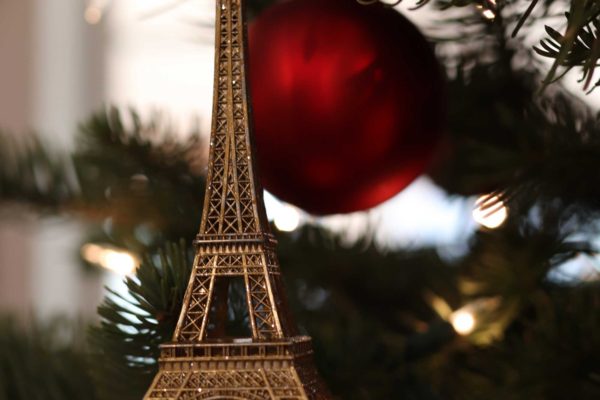
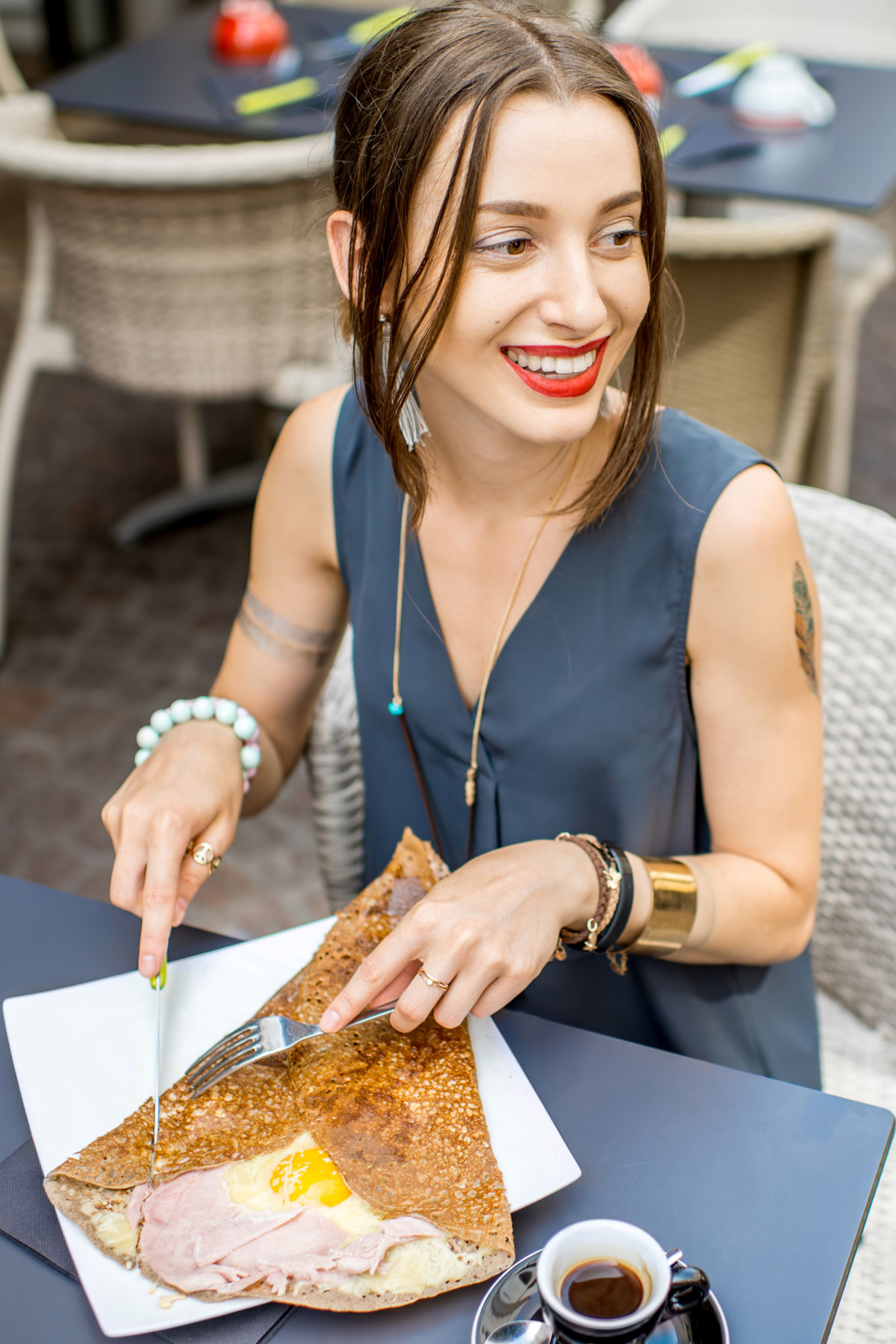
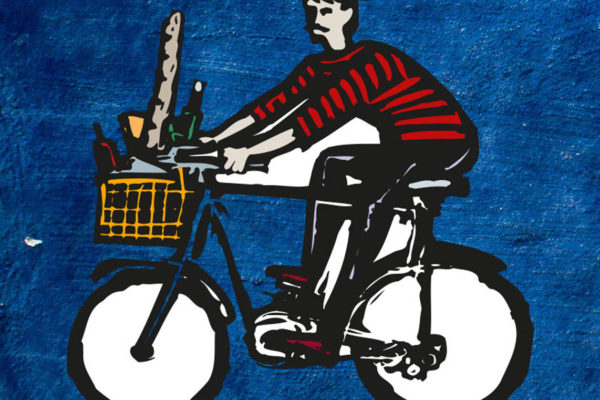
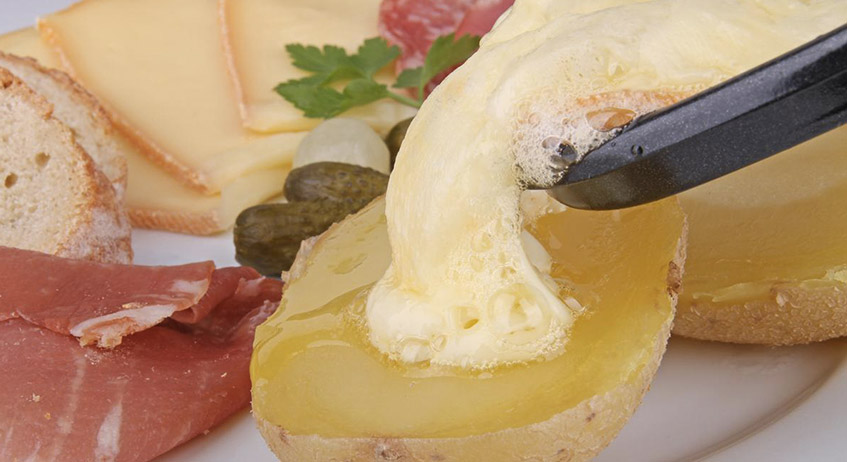
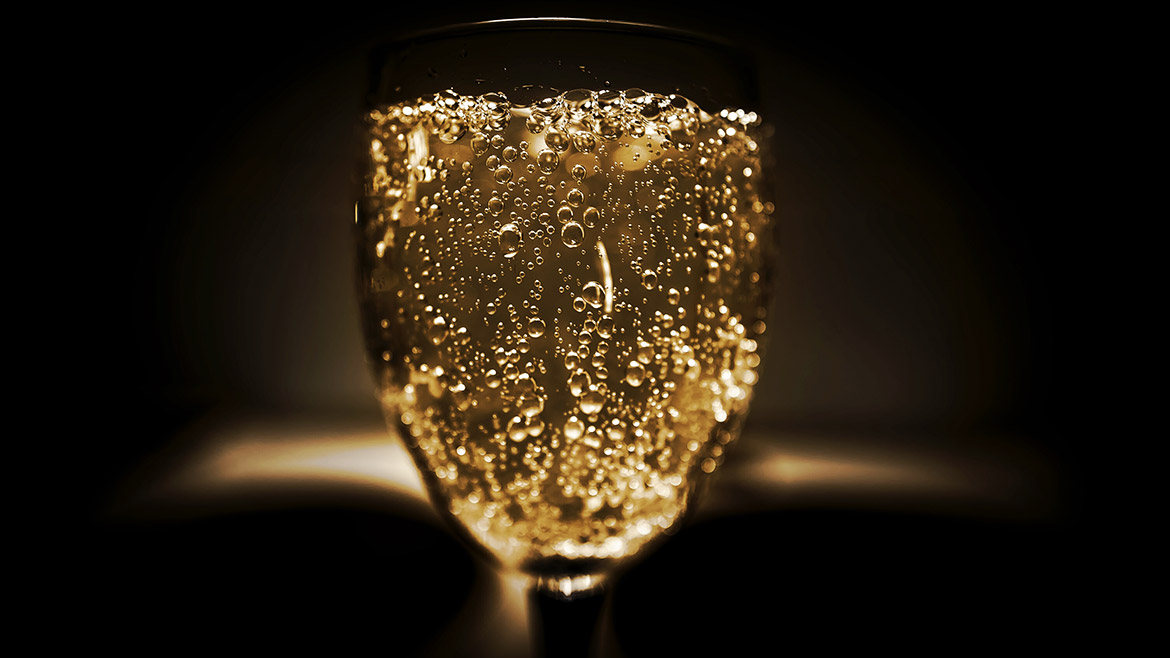
Anne
Most French people actually have 2 Christmas dinners : one on the 24th “Le Réveillon” and one on the 25th “Le repas de Noël”, possibly one with your parents and the other with your in-laws, depending on how far apart they live…
And la Buche is not the only dessert, in the South of France, following tradition, you should have 13 on the table (but they’re not all cakes)
Good thing is you don’t need to cook for the whole of the following week!
admin
Good point about doubling up of Christmas meals. I suppose it’s similar in Britain too, with sharing meals with different families on different days.
13 desserts!!! I struggle to eat one after Christmas dinner – mind you I always do 🙂 Yes, as long as your fridge is big enough, it sounds like you’re set for quite some time.
merry Christmas pictures 2017
Everyone loves what you guys tend to be up too. Such clever work and
coverage! Keep up the fantastic works guys I’ve you guys to blogroll.
Shona
You can certainly see your expertise within the work
you write. The arena hopes for more passionate writers such as
you who aren’t afraid to say how they believe. All the
time go after your heart.
fence company
Sweet internet site, super design, really clean and employ friendly.
Chèvre et Chou
The coldest Christmas, (my children would say the worst) and the only Christmas ever spent in France so far, was with friends in the Aveyron. We arrived from Rodez driving in a blizzard to find two ducks running loose in the courtyard (we had requested a brace of duck for Christmas dins- très amusing) and a log blazing in the dark in a massive fireplace. So dramatic! Our French caretaker Alain had given us an arrival to remember. The fire might have looked great but it had little effect. The heat went straight up a wide chimney that was more of a wind tunnel. The kids spent the holiday trying to climb into it to keep warm. Once they were asleep and warm in their beds we were forced to steal their hot water bottles to use in ours. However, shopping at the market in Villefranche lived up to expectations and on a bright crisp Christmas Day, we stood in the kitchen in scarves and wraps feasting on the best oysters, followed by our now dressed brace of duck and goodness knows how much bubbly and wine and of course, trivial pursuit.
admin
Cold aside, that sounds absolutely fabulous!